how do we measure success
At the forefront of everything we do is our commitment to helping young people develop the skills and values needed to thrive as adults. What we have known to be true through many enjoyable alumni and parent anecdotes, research also confirms: the Trail Blazers approach works.
Success is only possible if we know what we are doing and how we are doing it. Data helps us understand what our true impact is, what is working, and what needs to be improved. Guided by our strategic plan, the five essential questions below provide a yardstick by which to measure our progress, keep us focused as we grow, and—most important—help us keep the promises we make to our campers and their families.
We work hard to cultivate inclusive camp and school programs, accessible to all who believe in the power of our program. To understand who our campers and families are, our measurements include family zip codes; self-reported demographic information such as race, ethnicity, and gender identity; and economic status. We gather data using parent surveys, camper registration forms, and demographic questions included in evaluator surveys. LGBTQIA+ identification is a data point we are including in future surveys.
We work hard to cultivate inclusive camp and school programs, accessible to all who believe in the power of our program. To understand who our campers and families are, our measurements include family zip codes; self-reported demographic information such as race, ethnicity, and gender identity; and economic status. We gather data using parent surveys, camper registration forms, and demographic questions included in evaluator surveys. LGBTQIA+ identification is a data point we are including in future surveys.
We work hard to cultivate inclusive camp and school programs, accessible to all who believe in the power of our program. To understand who our campers and families are, our measurements include family zip codes; self-reported demographic information such as race, ethnicity, and gender identity; and economic status. We gather data using parent surveys, camper registration forms, and demographic questions included in evaluator surveys. LGBTQIA+ identification is a data point we are including in future surveys.
We work hard to cultivate inclusive camp and school programs, accessible to all who believe in the power of our program. To understand who our campers and families are, our measurements include family zip codes; self-reported demographic information such as race, ethnicity, and gender identity; and economic status. We gather data using parent surveys, camper registration forms, and demographic questions included in evaluator surveys. LGBTQIA+ identification is a data point we are including in future surveys.
We work hard to cultivate inclusive camp and school programs, accessible to all who believe in the power of our program. To understand who our campers and families are, our measurements include family zip codes; self-reported demographic information such as race, ethnicity, and gender identity; and economic status. We gather data using parent surveys, camper registration forms, and demographic questions included in evaluator surveys. LGBTQIA+ identification is a data point we are including in future surveys.
51% of families served
MAKE LESS THAN $60,000 ANNUALLY
The official poverty measure increases by a constant amount ($4,320) per individual in a household; this does not adequately reflect the increased cost of meeting basic needs. According to the “Defining Self-Sufficiency in New York City” report by City Harvest (2018), while there are 14% of households living below the official federal poverty threshold, 40% of households in NYC living below the self-sufficiency standard. Believing that families know their individual circumstances better than we do and that W-2s do not tell the whole story, we ask parents to self-select a payment tier that best first their needs. We have additional scholarships available for those for whom the program remains out of reach.
The following graphs depict a breakdown of camper demographic information collected in 2019.
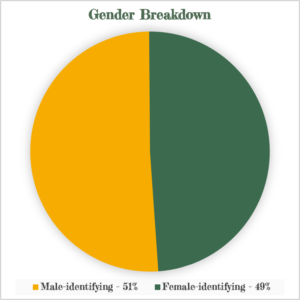
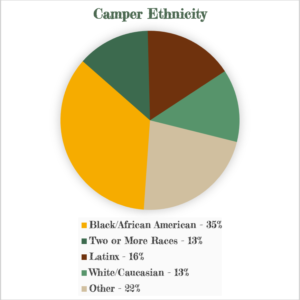
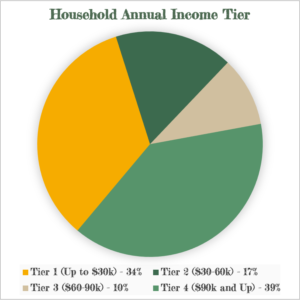
GREW IN AT LEAST ONE COMPETENCY
OVERNIGHT CAMPER SURVEY
*For youth in Grades 3-5, this evaluation tool incorporates research demonstrating that young people in Grades 3-5 are nearing and entering the transition from late childhood into early adolescence, a period in which dramatic social, cognitive, and physical change is beginning to occur. One implication of evaluating this age group is the definition of success being defined as growth in skills as well as being able to maintain baselines in these skills, especially relating to empathy development and school engagement.
OVERNIGHT PARENT QUOTES
Weeks after camp ended, I would still hear my kids sing songs they learned during campfires, and I would hear them talk among themselves of the experiences they had and shared. They really enjoyed it, which surprised me because I was very concerned about them being away from home for so long. They want to go back!
My sons are excited every year to go to camp. They come back with more motivation and confidence. We see them full of excitement when they speak about all the things they’ve learned and all the friends they made. The experience has always been more than exceptional and we look forward to continuing with the trailblazer tradition. My oldest is even talking about eventually becoming a counselor himself. We are thrilled!!
Just wanted you all to know the amazing time that he had this year with you all! He was so excited about being a Leader in Training! He was just so proud of himself and all of his many accomplishments. We are so proud of him and so glad that you Riel took the time with your staff to visit his grammar school years ago when he was just a little boy full of energy and ready to go and explore. You have really proved to me that facing your fears head-on is hard but very much needed so you can excel to the next level. I just want to say thank you so much for giving my son the opportunity to grow and glow. Thank you!
100% after school campers
GREW IN AT LEAST ONE COMPETENCY
AFTER SCHOOL CAMPER SURVEY: PREK – 2ND GRADE (PRE VS. POST-PROGRAM)
AFTER SCHOOL CAMPER SURVEY: 3RD – 5TH GRADE (PRE-PROGRAM VS. POST PROGRAM)
AFTER SCHOOL PARENT SURVEY
AFTER SCHOOL PARENT QUOTES
My daughter is always excited about the days she stays late for Trail Blazers. I had worried about the longer days at school, but she always walks out of there happy and energetic. Trail Blazers has proven to be a positive way to keep her engaged outside of school hours.
Trail Blazers has a great afterschool program and I feel safe sending my child here. Also, my son loves the outdoors now even more and is learning new and exciting things about nature I am so happy about that, go Trail Blazers.
Under One Sky is an exceptional afterschool experience. The ratio of kids to instructors is beneficial. My son is happy, busy, and safe. He really grew and learned to get along with others.
64% of Alumni (1941-1980)64% of Alumni (1941-1980)
SAY THAT TRAIL BLAZERS INFLUENCED RELATIONSHIPS WITH FAMILY AND FRIENDS
ALUMNI SURVEY
ALUMNI QUOTES
I do very much enjoy adventure – climbing up a mountain, rafting on a river, exploring new places. I prefer nature and adventure to fancy cruises, meeting different peoples to “society”.
It helped me decide to become a teacher – I did it for 35 years.
I was so used to one culture, one race, one community. Being at TBC you had to expand your mind in order to get along with others.
[I] think it’s made me a better person and that helps me be a better parent.
I can still light a fire with flint and steel (shocked my children!) I’ve taught my children so much of the skills and core of nature I learned – 3 bite rule, nature vacations, leave no trace, and songs.
The training that was a part of the summer experience had a great influence on how I approach my family, friends, and other professionals. The close sense of community that TBC encouraged was like a large family. I was able to develop my communication skills with individuals and in relation to larger groups. I still teach “I feel” statements in my college course. I still apply a few key ideas to my life today that I got from my friends and coworkers at TBC…”I can’t make anyone do anything, but I can provide them choices and feedback and allow them to make their own choice.” “Remember the importance of playing and fun.” “It is ok to agree to disagree and move on.” “Once you build a relationship with someone it is always there simmering even when you don’t see them on a daily basis.” I learned how to have healthy relationships, set expectations, and healthy boundaries.
Our staff
To understand who our staff members are, our measurements include self-reported demographic information such as race, ethnicity, gender, and LGBTQIA+ identity; educational background; and neighborhood representation. We are interested in knowing how many of our staff are with us for multiple years, our balance of internal and external hiring, and how many staff move from front line roles to leadership positions.
We collect data using HelloInsight’s Pre-program Staff Needs Assessment tool as well as in-house surveys. We are developing tools both in-house and with an external partner to capture additional information that will help us better understand who our staff is and how we can best provide them with a meaningful experience that translates into powerful camp programs for our youth. In fall 2019 we implemented a Diversity Assessment with our Brooklyn-based After School staff to supplement demographic information collected upon registering in our staff enrollment system. Select results are below.
Our Staff
To understand who our staff members are, our measurements include self-reported demographic information such as race, ethnicity, gender, and LGBTQIA+ identity; educational background; and neighborhood representation. We are interested in knowing how many of our staff are with us for multiple years, our balance of internal and external hiring, and how many staff move from front line roles to leadership positions.
We collect data using HelloInsight’s Pre-program Staff Needs Assessment tool as well as in-house surveys. We are developing tools both in-house and with an external partner to capture additional information that will help us better understand who our staff is and how we can best provide them with a meaningful experience that translates into powerful camp programs for our youth. In fall 2019 we implemented a Diversity Assessment with our Brooklyn-based After School staff to supplement demographic information collected upon registering in our staff enrollment system. Select results are below.

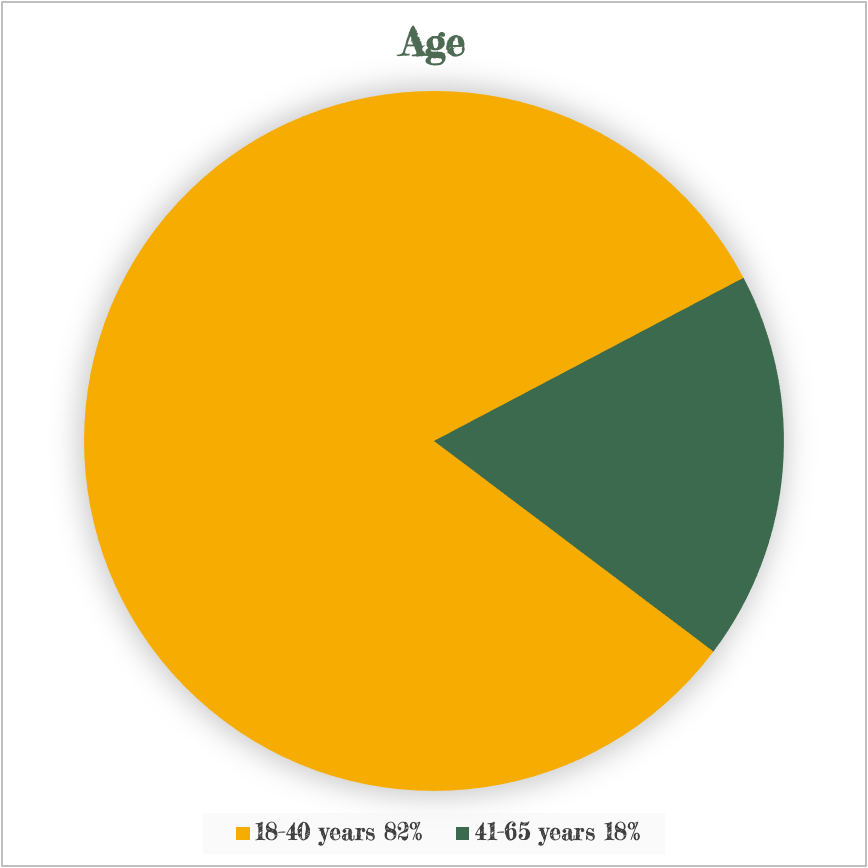
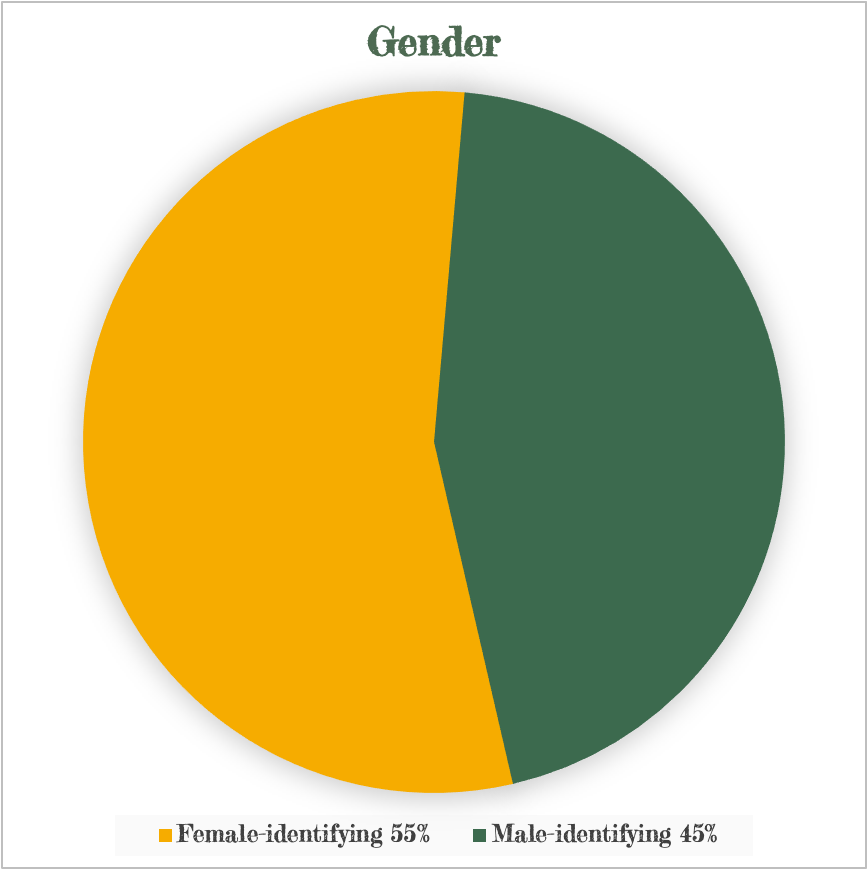
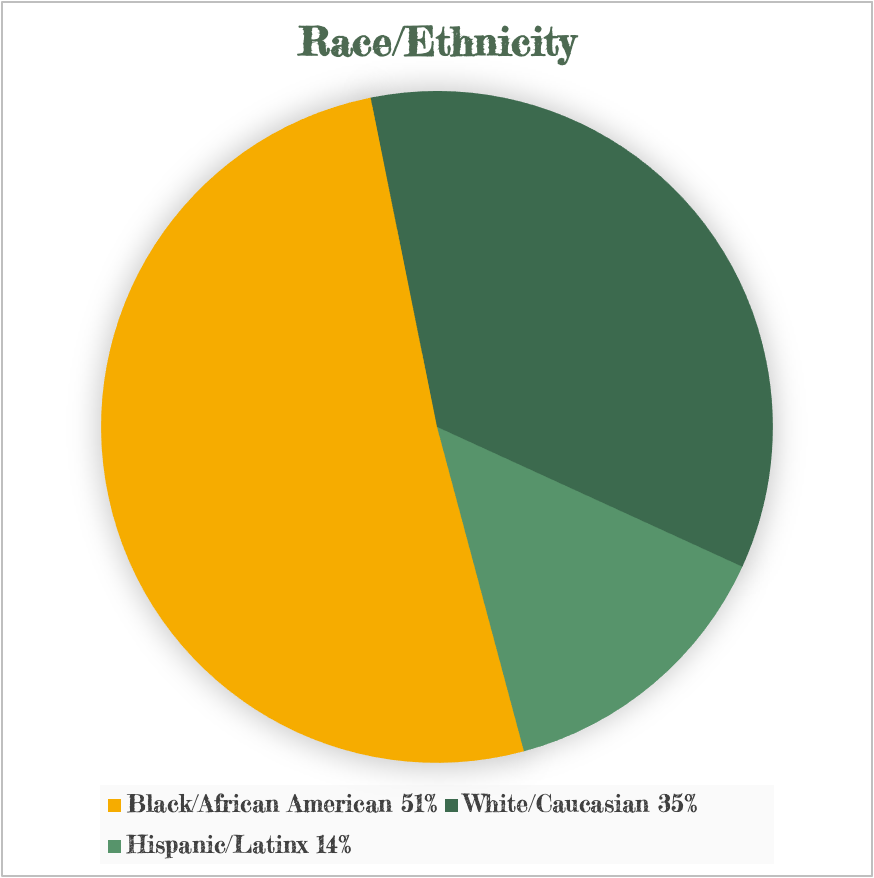
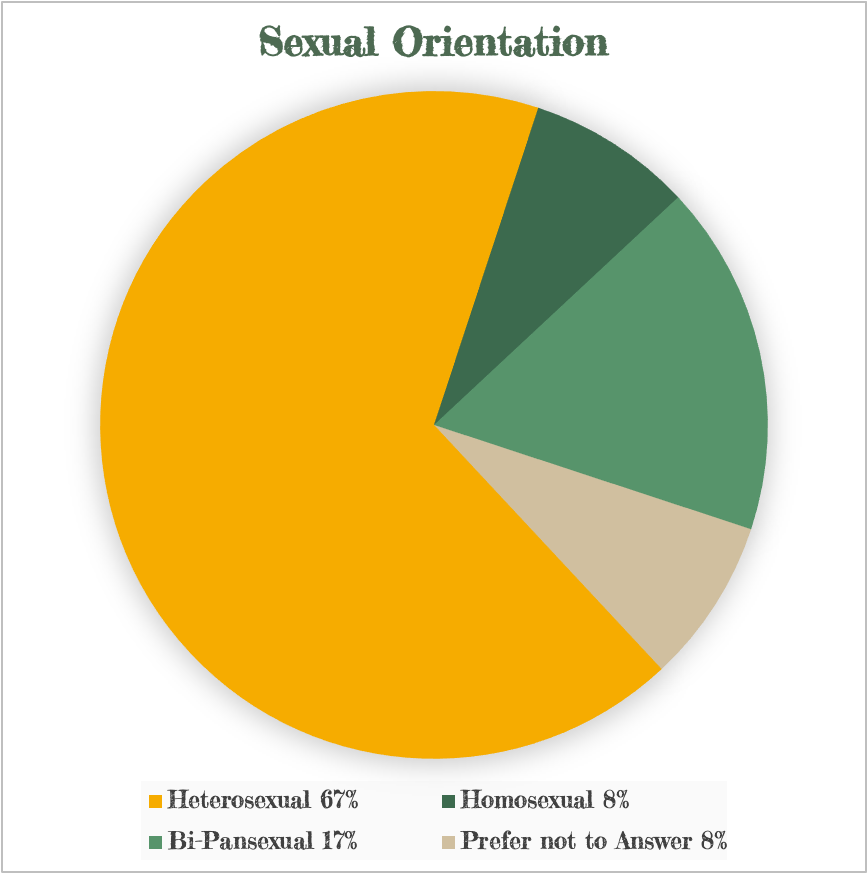
Future data points we will be collecting include staff success in achieving their KPIs and more robust demographic information.
Our Board
The effectiveness of our board is paramount to our success as an organization. There are currently 24 board members, 3 members of an advisory board, and 3 emeritus members. Four of our board members are Trail Blazers alum. Of our 24 board members, two members’ services began in 1998, and 5 joined in 2020.
In addition to short-lived committees created for specific, time-bound objectives (such as the Strategic Plan Committee in winter of 2019), we have 8 active board committees, each responsible for directing and advising on specific areas of the organization:
Our board members represent a number of industries including law, finance, marketing, accounting, tech, education, and energy. We implemented a Diversity Assessment in the fall of 2019, in which 13 board members participated. Select results of that survey are below.
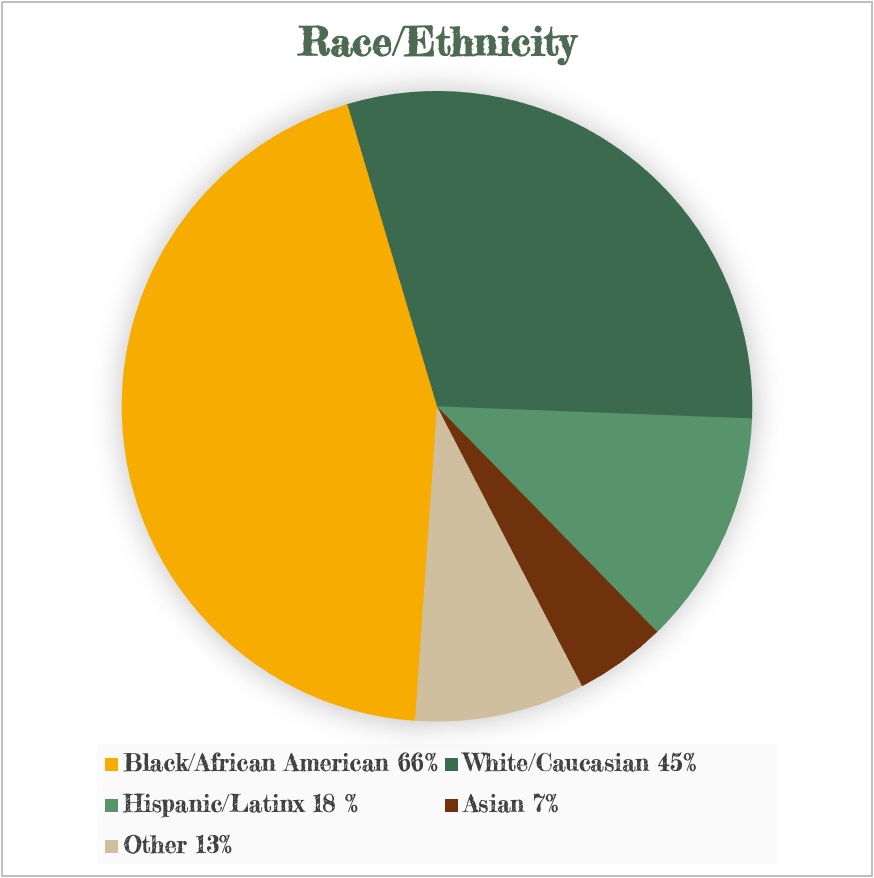

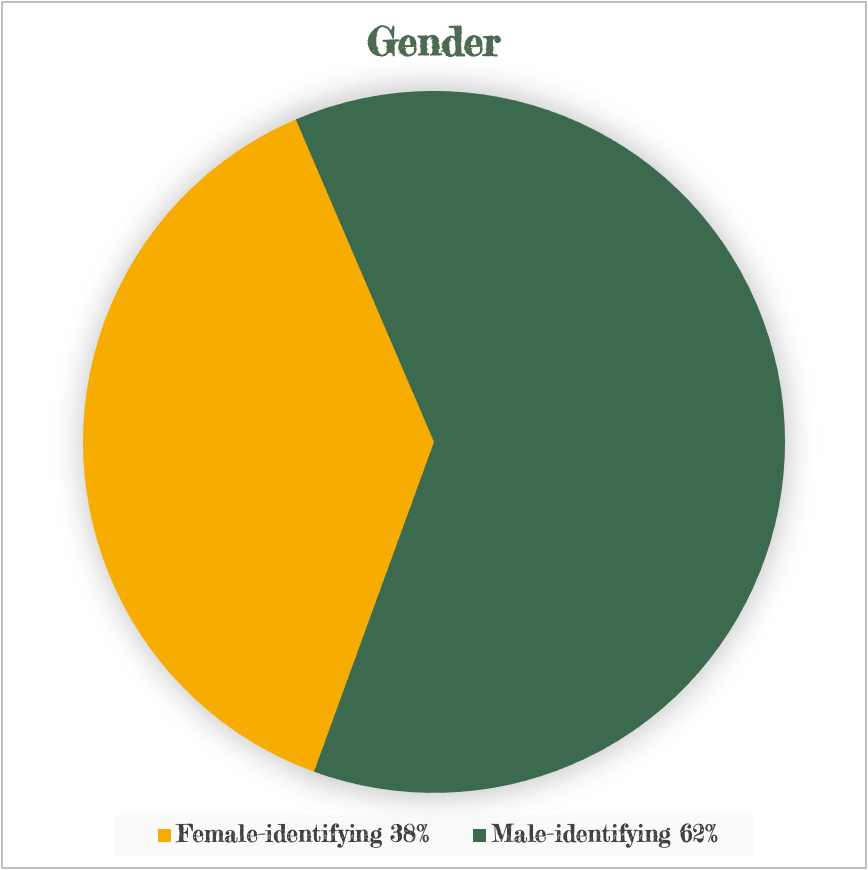


Our leaders – that is, every Trail Blazers staff member – are the most important resource for the success of our program and our mission. We work to cultivate a diverse team representative of all Trail Blazers’ participants, where staff members are eager to do their best work each day. We gather data on the above points in a number of ways through our employee management systems, mid-season and post-season performance reviews, post-season staff evaluations of their employment experience, and HelloInsight‘s Staff Needs Assessment.
96% of overnight camp staff
FELT THAT LEADERSHIP WAS INVESTED IN THEIR SUCCESS
We work to cultivate clear paths for advancement. In our 2019-2020 After School program, 4 out of our 6 Site Directors had been promoted from within, with 3 having participated in 2 or more Trail Blazers programs, and 2 having been participants during their youth. We are proud to highlight that a member of our senior staff team began at Trail Blazers as an intern.
We are proud of our staff retention rate, particularly in our Brooklyn-based programs. In the 2019-2020 school year, 40% of our After School staff were returners. Our senior staff team of five has been with Trail Blazers for an average of 10 years, 9 months.
During and after every program, we put out surveys to understand staff satisfaction levels. Highlights from the close of our 2019 camp season:
We intentionally cultivate opportunities for continued engagement. This spring we were able to re-attract 5 former staff who had moved out of state to work with us again in our remote program. In January 2020, Trail Blazers formally adopted an Alum Engagement Committee as an official board committee.
In the last few years, Trail Blazers has grown from a predominantly single-service program to a multi-tiered youth services organization Like all non-profits, we have had to consider how the economic underpinnings of the organization support financial health and longevity.
Trail Blazers considers each program arm’s (Overnight Camp, Day Camp and School Programs) contribution to the overall stability of the organization; each program arm carries allocated portions of the core functionality expenses, the backbone of the organization that supports the full program portfolio.
Decisions on program development, expansion, or contraction are made strategically, considering programs in relation to each other, and in light of both short term and long term goals. With a focus on equity in access to our programs, the financial performance of individual programs, or components within programs do not follow a “one-size-fits-all” model. At any given time, strategic decisions are made about programs’ individual financial performance.
A common challenge for growing nonprofit organizations like Trail Blazers is the need to develop sufficient operational capacity, including operational reserves. For too many non-profits, operating on a break-even budget each year is considered sufficient, but we know this is not a sustainable approach.
We have developed an internal model that guides our planning and budgeting, and that considers both short term financial challenges, long term financial investments, and initiatives to build financial stability.
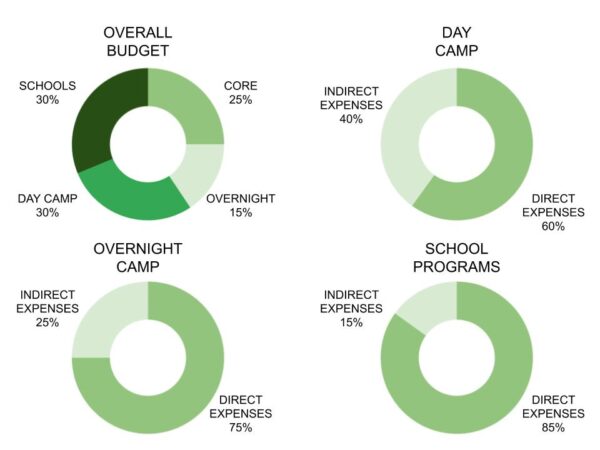
For more information, visit our Financial Reports page.